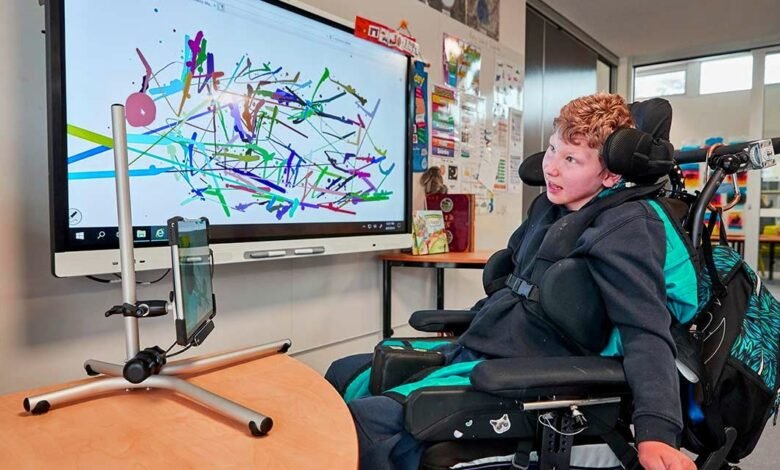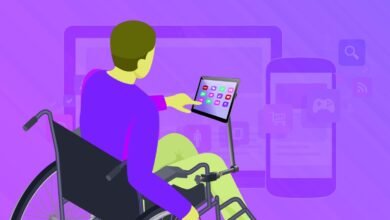Innovations in Disability Technology in 2023

Innovation in technology has revolutionized the world as we know it, and nowhere is this more evident than in the field of disability technology. Thanks to advancements in technology, individuals with disabilities now have access to an increasing number of tools that enable them to live fuller, more independent lives. In this article, we will explore the latest innovations in disability technology in 2023.
Disability technology has come a long way over the past few decades, and the pace of innovation shows no signs of slowing down. In this article, we will explore the latest innovations in disability technology in 2023, from smart home technology to assistive technology for vision impairment, and everything in between.
Read More: The Impact of an Accident on Your Quality of Life
Smart Home Technology
Smart home technology has become increasingly popular over the past few years, and it has enormous potential for individuals with disabilities. With smart home technology, people with disabilities can control various aspects of their homes, such as lighting, temperature, and security, using their voice, smartphones, or other devices. This technology is particularly useful for individuals with mobility issues who may have difficulty moving around their homes.
Wearable Technology
Wearable technology has exploded in popularity over the past few years, and it has enormous potential for individuals with disabilities. Wearable technology, such as smartwatches and fitness trackers, can be used to monitor various aspects of an individual’s health and well-being, such as heart rate, blood pressure, and sleep patterns. This technology is particularly useful for individuals with chronic conditions who need to monitor their health regularly.
3D Printing Technology
3D printing technology has been around for several years now, but it has enormous potential in the field of disability technology. With 3D printing technology, prosthetics and other assistive devices can be customized to fit an individual’s specific needs, making them more comfortable and functional. This technology also has the potential to reduce the cost of prosthetics and other assistive devices, making them more accessible to individuals with disabilities.
Prosthetics Technology
Prosthetics technology has come a long way over the past few years, and advancements in technology have made prosthetics more functional and comfortable than ever before. For example, bionic limbs can be controlled using the individual’s thoughts, allowing for more natural movement and greater independence.
Assistive Technology for Vision Impairment

Assistive technology for vision impairment has also made significant advancements in recent years. For example, smart glasses can be used to magnify images and text, making them easier to see. Other assistive technology for vision impairment includes braille displays and text-to-speech technology, which can convert written text into speech.
Brain-Computer Interfaces
Brain-computer interfaces (BCIs) have enormous potential for individuals with disabilities, particularly those with severe mobility impairments. BCIs can be used to control various devices, such as prosthetics or computers, using the individual’s thoughts. This technology has the potential to revolutionize the lives of individuals with disabilities, allowing them to be more independent and control their environment.
Robotic Technology
Robotic technology has the potential to be incredibly useful for individuals with disabilities.
For example, robots can be used to assist with tasks that individuals with disabilities may find difficult, such as lifting heavy objects or cleaning. This technology can also be used in healthcare settings to provide physical therapy and rehabilitation.
Sensory Technology
Sensory technology has the potential to improve the lives of individuals with sensory impairments. For example, hearing aids and cochlear implants can improve hearing, while sensory substitution devices can be used to provide tactile feedback to individuals with vision impairments.
Augmented Reality Technology
Augmented reality technology has the potential to revolutionize the way individuals with disabilities navigate the world around them. For example, augmented reality glasses can provide individuals with visual impairments with additional information about their environment, such as the location of nearby objects or the layout of a room.
Virtual Reality Technology
Virtual reality technology can be used for a variety of applications in the field of disability technology. For example, it can be used for virtual reality therapy, which has been shown to be effective in treating a variety of conditions, including anxiety and post-traumatic stress disorder
Artificial Intelligence Technology
Artificial intelligence (AI) technology has enormous potential in the field of disability technology. For example, AI-powered chatbots can be used to provide individuals with disabilities with information and support, while AI-powered prosthetics can learn from an individual’s movements to provide more natural movement.
Robotics and AI for Rehabilitation
Robotics and AI technology can also be used in rehabilitation settings. For example, exoskeletons can be used to provide support and assistance to individuals with mobility impairments, while AI-powered rehabilitation software can be used to provide customized rehabilitation programs.
Telemedicine
Telemedicine has become increasingly popular over the past few years, and it has enormous potential for individuals with disabilities. Telemedicine allows individuals to receive healthcare services remotely, which can be particularly useful for individuals with mobility impairments or those who live in remote areas.
Conclusion
Innovation in disability technology has come a long way over the past few years, and the pace of innovation shows no signs of slowing down. With advancements in technology such as smart home technology, wearable technology, 3D printing technology, prosthetics technology, assistive technology for vision impairment, brain-computer interfaces, robotic technology, sensory technology, augmented reality technology, virtual reality technology, AI technology, robotics and AI for rehabilitation, and telemedicine, individuals with disabilities have access to an increasing number of tools that enable them to live fuller, more independent lives.
Read More: 8 Best Strategies to Combat Depression, Stress, and Anxiety in Workspace
FAQs
What is disability technology?
Disability technology refers to the use of technology to enhance the quality of life of individuals with disabilities. This can include devices, software, and other technologies designed specifically for individuals with disabilities, as well as mainstream technologies that have been adapted for use by individuals with disabilities.
How does smart home technology help individuals with disabilities?
Smart home technology can help individuals with disabilities by automating tasks and providing greater control over their environment. For example, individuals with mobility impairments can use smart home technology to control lights, temperature, and other devices using their voice or a mobile app, eliminating the need to physically interact with switches and buttons.
What is 3D printing technology, and how can it be used in the field of disability technology?
3D printing technology is a process in which a three-dimensional object is created by building up layers of material. In the field of disability technology, 3D printing can be used to create customized prosthetics, assistive devices, and other tools to meet the specific needs of individuals with disabilities.
What are some of the latest advancements in prosthetics technology?
Recent advancements in prosthetics technology include the development of prosthetics that can be controlled using the individual’s own neural signals, as well as prosthetics that are able to provide sensory feedback to the user, such as the feeling of touch.
How does telemedicine benefit individuals with disabilities?
Telemedicine can benefit individuals with disabilities by providing greater access to healthcare services, particularly for individuals who may have difficulty traveling to a healthcare provider’s office. Telemedicine allows individuals to receive care remotely, using video conferencing, remote monitoring, and other technologies.




